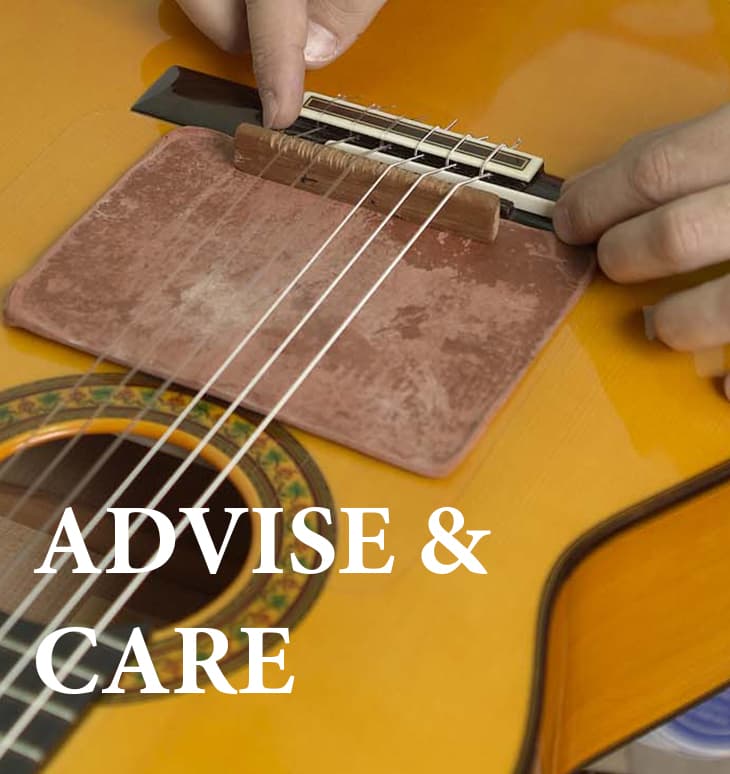

What is a Spanish guitar?
Let’s start at the beginning. What is a Spanish guitar? To know how to take good care of an instrument, we must be clear about what we have in our hands and with what materials it is built. A Spanish guitar is an instrument basically made with different wood, glues and varnishes. Wood, like it happens with many glues, is a hygroscopic material that reacts to these changes in humidity. In this way we arrive at one of the greatest dangers in the conservation of a musical instrument: not adequately controlling the humidity levels where the guitar is stored with a hygrometer (which is not less than 40% nor greater than 60%, being the ideal value 50%) and not applying adequate measures.
It is true that our natural drying system gives greater stability to the wood that we use in our handmade guitars. We have wood with 20 to 70 years old, which we are gradually replacing so that, using the same system, we can use them in the future. However, this is not enough. There always has to be a follow-up, a control and a care.
This lack of control has two faces::
- Humidity
- Dryness
Discover here all the tips for the best preservation of your guitar.
Here you can download the file where we show you what can happen to your guitar and what measures you should take. Remember that both heating and air conditioning can become enemies of your guitar if you do not control the relative environmental humidity.
Next, we offer you a series of explanatory videos that can be extremely useful for the conservation of your instrument.
How to change the strings of your guitar?
This video shows us how to change all the strings at the same time. Remember that it is not good to leave the guitar without strings for a long time or with part of the strings, because due to the unbalanced tensions it can cause movements in the fretboard.
How to clean your guitar and hydrate the fingerboard?
Adjustment and pushing of your guitar
Our guitars have a standard action for each of the guitar classes (artisan, flamenco, studio, cutaway, acoustic). This height can be adapted at the request of the guitarist as long as the guitar allows it.
Buzzing and strange noises
Remove surface scratches
This video is intended for guitar professionals (stores and dealers). If you are not in this group, we recommend you go to your trust center, since you must be very careful not to produce bald spots in the varnish.
Transport and storage
This video is intended for stores and distributors, however, the guitarist must take care of some details.
1
First of all, it is advisable to check the box when you receive your guitar to check that it has not received any blow during transport. If it has received a blow, you must take photos and write it down on the delivery note of the courier or at the provided email address. Then get in touch with us as soon as possible and send us as much information as possible. Once the box has been checked (and the courier would no longer be present), it is necessary to check the content and photograph the damage, if any, to send us all the information as soon as possible.
2
To store it you have to keep it in a place where you have a hygrometer to control the relative humidity, never near the radiator or under the air conditioning. The guitar has to “breathe”, therefore it is not good to keep it in a case for many months, or out of it for a long time. There has to be a midpoint
